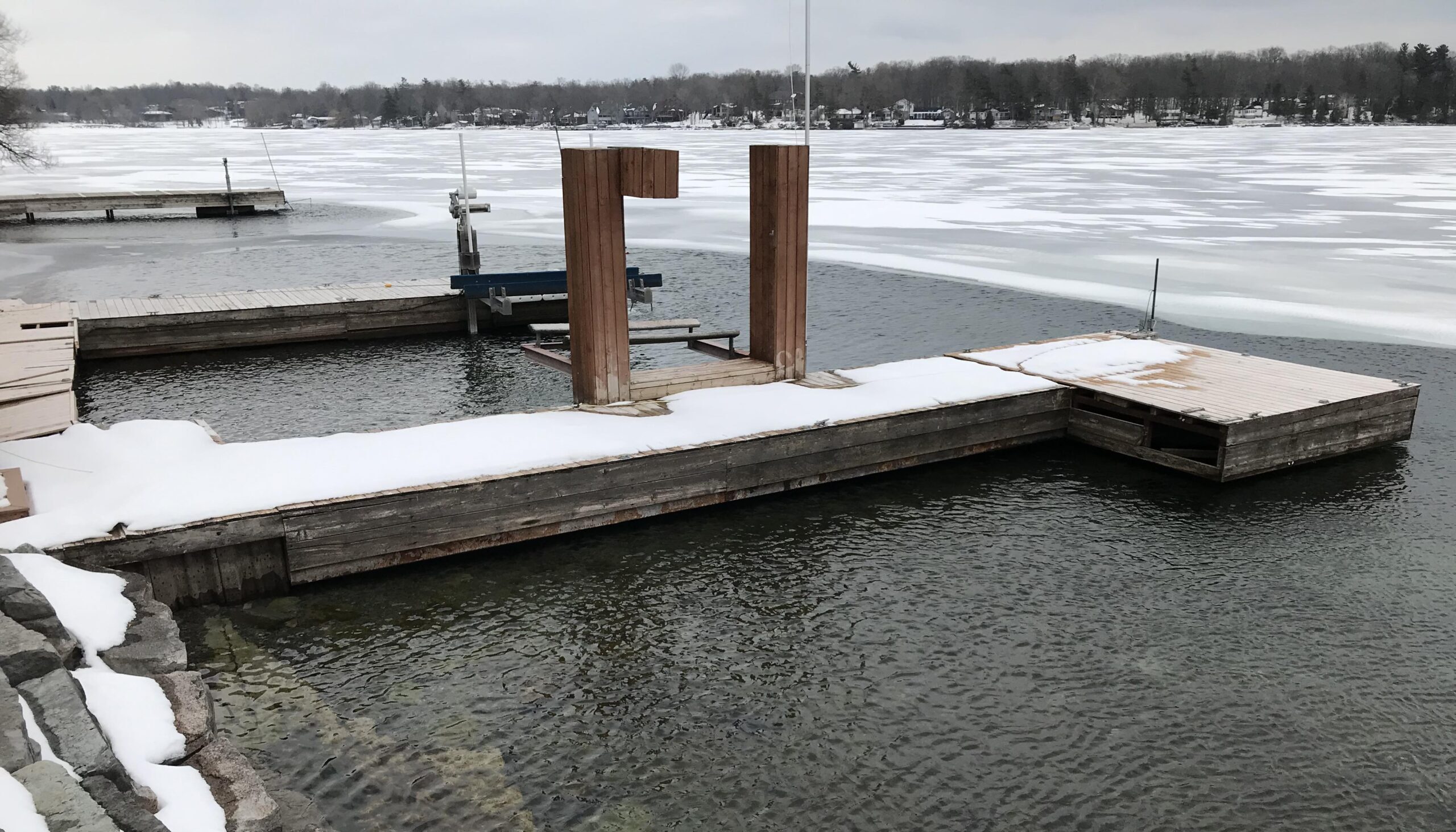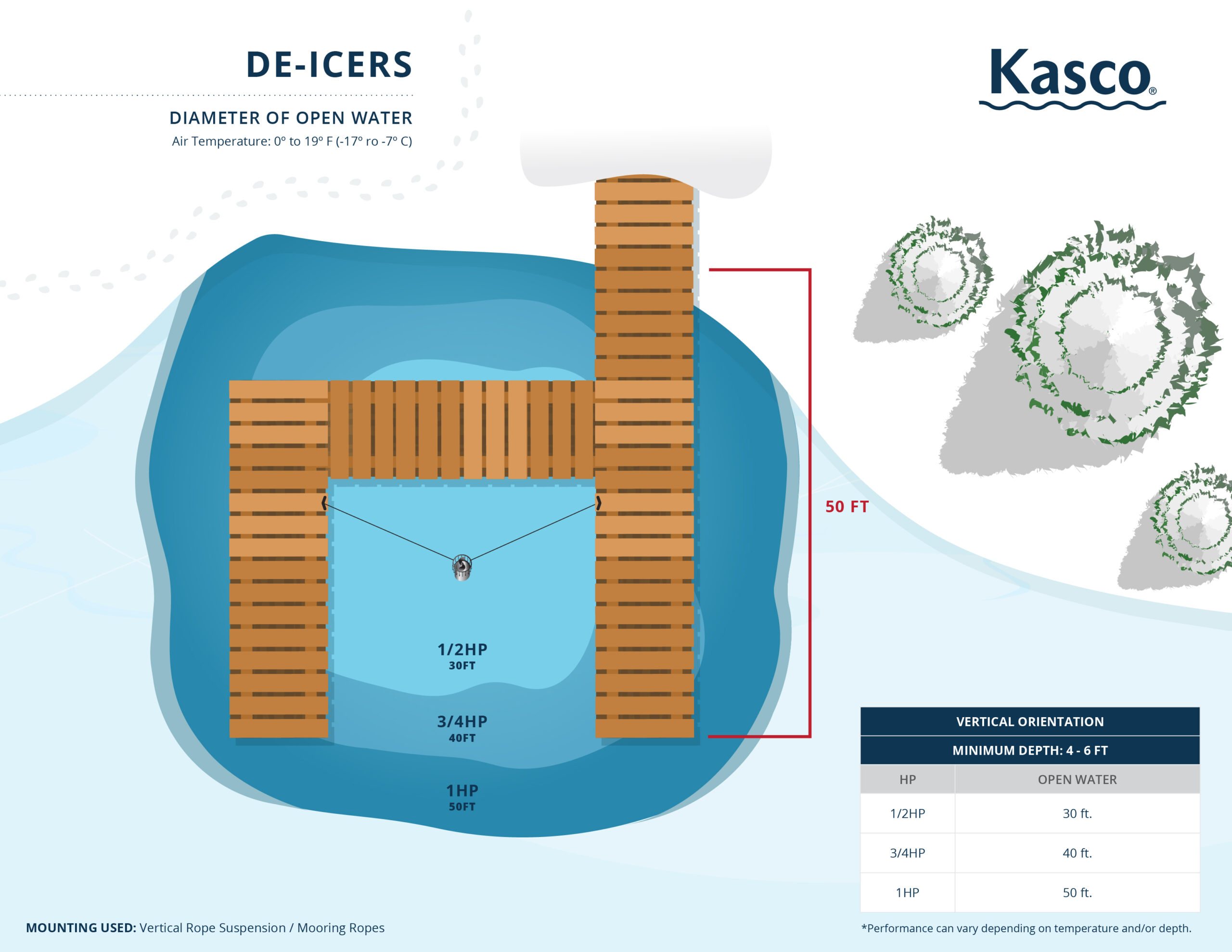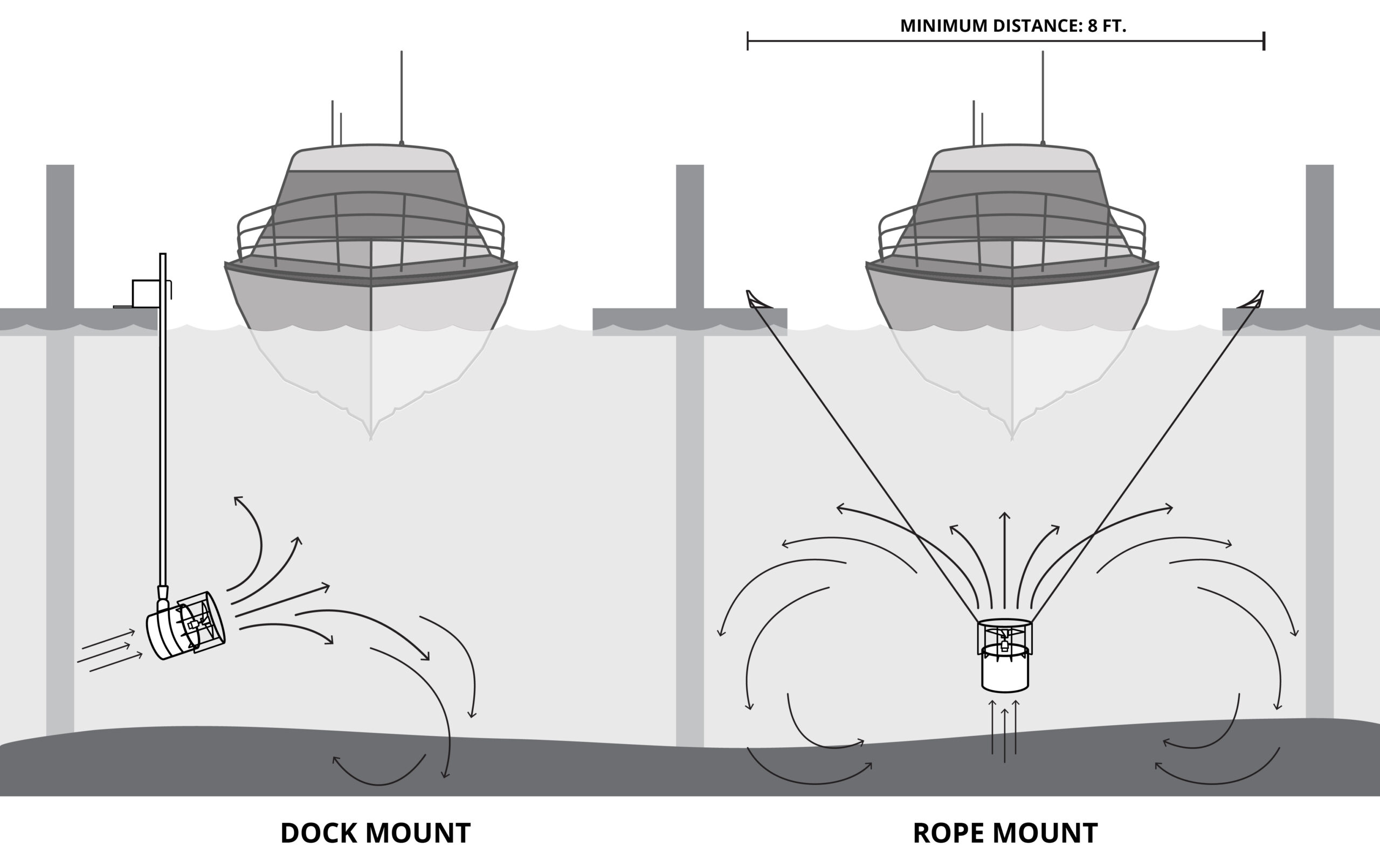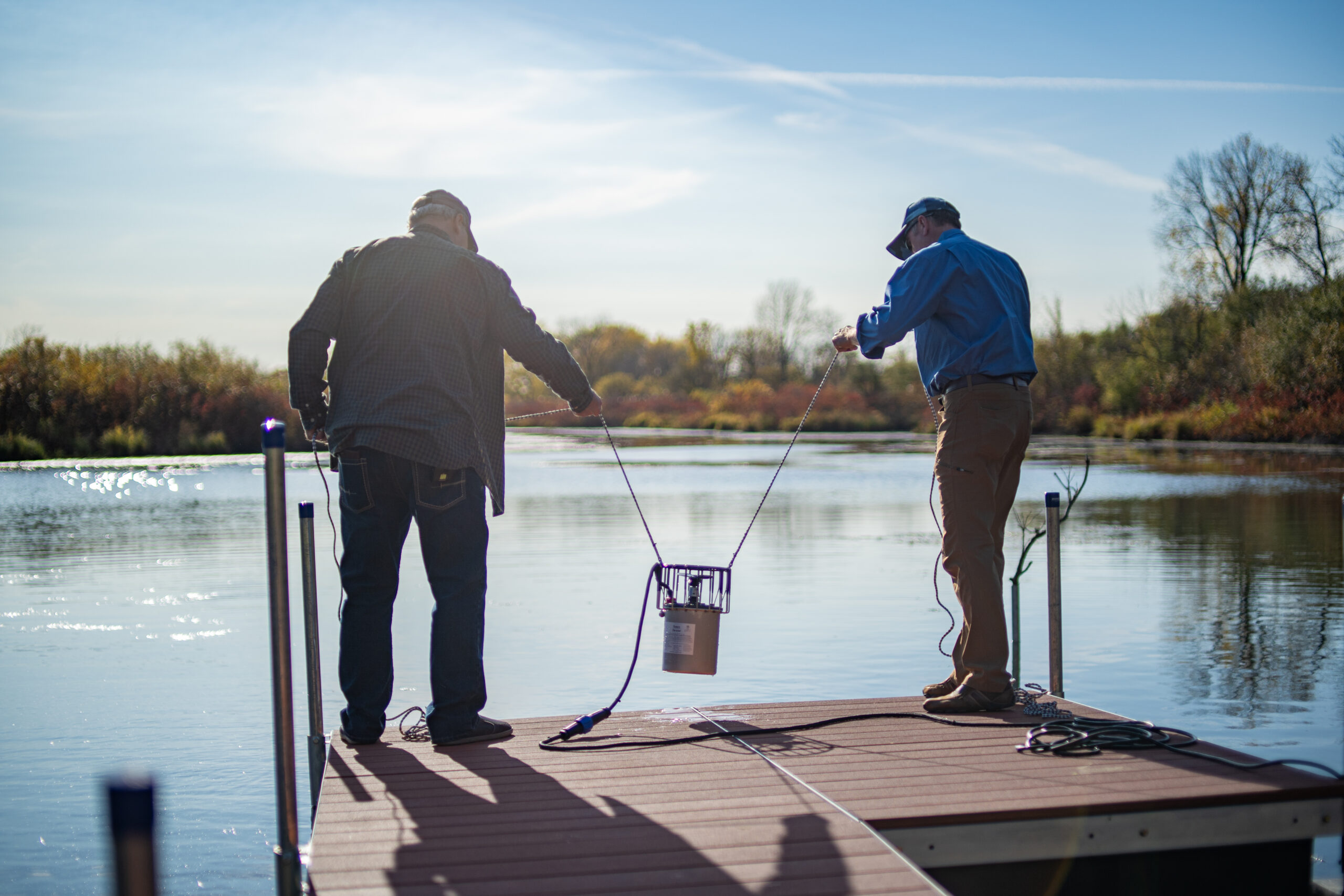An Interview with Kasco’s De-icing Account Manager, Dan Cremin | Oct. 7, 2025
____________________________________________________________________________________________
Buying your first De-icer can feel overwhelming. Do you need a 1/2HP unit or a 1HP unit? Will one De-icer be enough for your dock? And what about water depth? We sat down with Dan Cremin, Kasco’s De-icing Account Manager, to answer the most common questions beginners have when figuring out what size De-icer they need.

What information do I need before choosing a De-icer?
At a minimum, you’ll need to know your location, what structure you are protecting, and the water depth and dimensions around your dock. It’s also important to consider your power source since that can affect what size unit or units you’re able to run. A photo of your setup is often one of the most helpful tools, because docks frequently have boat lifts, jet ski platforms, or other attachments that change how much open water you’ll need.
Can one De-icer cover my whole dock?
Whether one unit is enough depends on the size and shape of your dock. A straight dock that is 40 to 50 feet long can often be protected with a single unit at the end pointed back toward shore. If your dock is L-shaped or T-shaped, you may need more strategic placement or even a second unit. Very long docks, especially those over 60 feet, floating docks, or shallow water areas may also require multiple units for full coverage.

How does water depth affect sizing?
Water depth plays a major role in how well a De-icer will perform. For the best results, you’ll want at least 2.5 to 3 feet of depth, but 4 to 6 feet of depth is optimal. The unit should be positioned so that there is 6 to 12 inches of clearance beneath it. Shallow water limits performance and can create risks such as pulling in debris, which makes proper placement especially important.
What horsepower do I need?
In mild climates like the southern and central U.S., a 1/2HP unit is often enough for smaller docks. In the Midwest and northern states where winters are harsher, a 3/4HP unit is more common. For very cold regions like Canada, or when protecting large structures, a 1HP unit is usually the best choice. If you are unsure, many customers choose to size up. A slightly larger unit provides peace of mind, and you can always run it less often if needed.
Can a De-icer ever be too big?
Yes, oversized units can sometimes create more open water than necessary, hundreds of feet in some cases. This isn’t always ideal, but it can usually be managed by running the unit fewer hours or adjusting the mounting angle to reduce its spread.
How much open water will a De-icer create?
The amount of open water depends on horsepower, depth, angle of orientation, and climate. As a general rule, for a unit mounted vertically, a 1/2HP unit opens an area around 30 feet wide, a 3/4HP unit opens about 40 feet, and a 1HP unit can clear about 50 feet. Results are best in deeper water and earlier in the season, since consistent cold temperatures later in the winter tend to shrink open areas.

How do I install a De-icer?
There are two main installation methods. A rope mount is the quickest and simplest, where you tie the unit to a dock cleat and lower it into the water. This method can be done in minutes. A dock mount is a more permanent option that involves hand tools and a drill. Even with a dock mount, installation usually takes less than an hour.

When should I install it?
It’s best to install a De-icer before ice forms. Many property owners put theirs in during the fall, especially if they won’t return before winter. It’s also possible to install a unit after ice has already formed by cutting a hole with an auger or saw, though this is more difficult and can be dangerous.
What are common mistake to avoid?
One of the most common mistakes is mounting the De-icer too close to the surface, which causes splashing and reduces the area of influence. Another frequent error is using extension cords, which can lead to power issues. Finally, some people mistakenly point the unit away from shore, creating unsafe gaps in the ice for others.
How much does it cost to run a De-icer?
Most users spend between $40 and $50 per month in electricity during the winter, although this varies by region and how often the unit is run. Many boaters prefer to run their De-icer more often for peace of mind, reasoning that a slightly higher utility bill is far less costly than repairing ice damage.

What if I’m still unsure?
Sizing depends on factors like climate, depth, dock shape, and what you’re protecting. If you’re not confident, reach out to our team with photos and dimensions of your setup. We can help you choose the right size and placement for your situation.
In conclusion, start by knowing your dock layout, water depth, and climate. Most people use half to one horsepower units, and placement is just as important as size. When in doubt, ask for help—protecting your dock or boat now will save you costly repairs later.